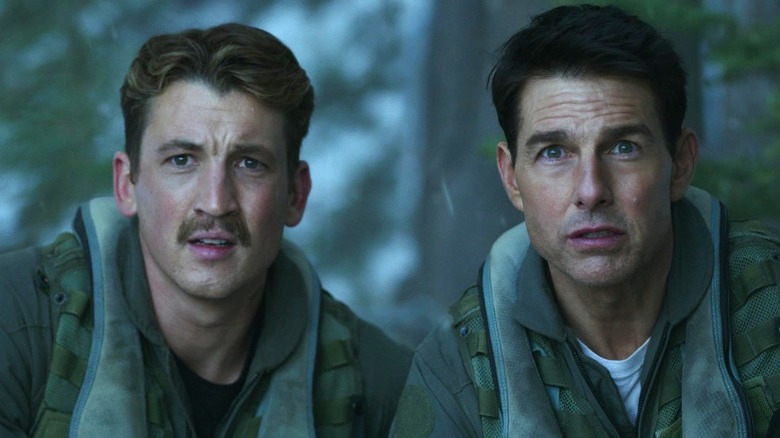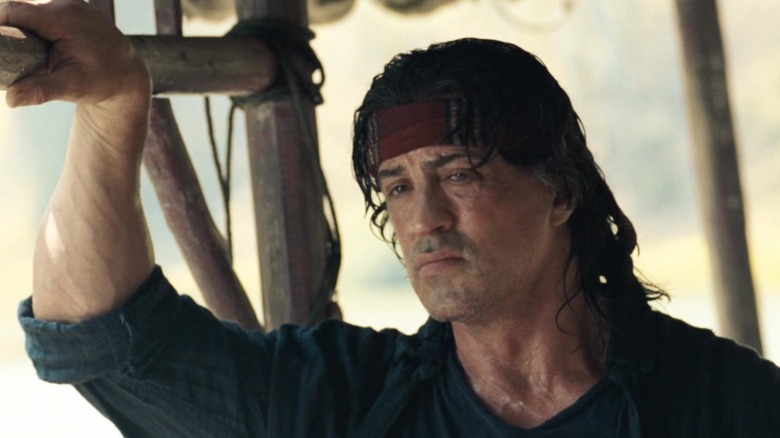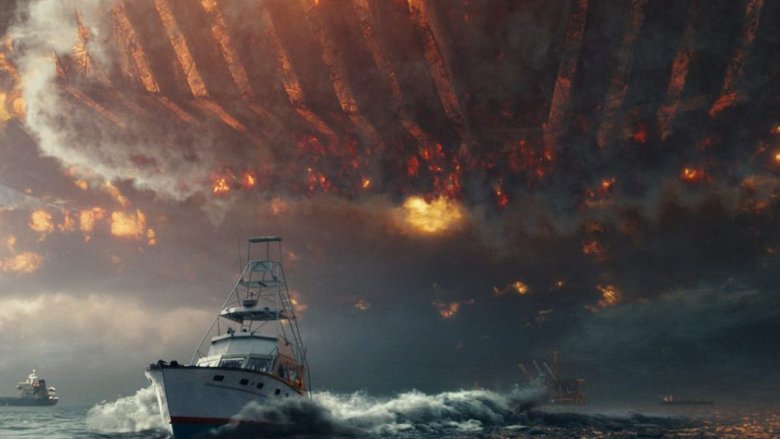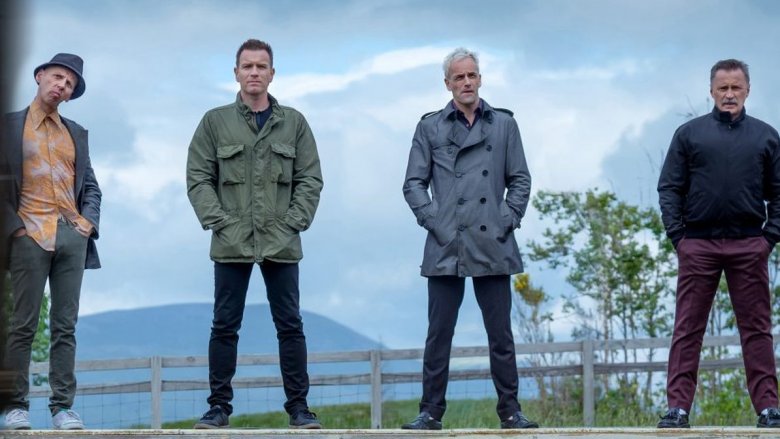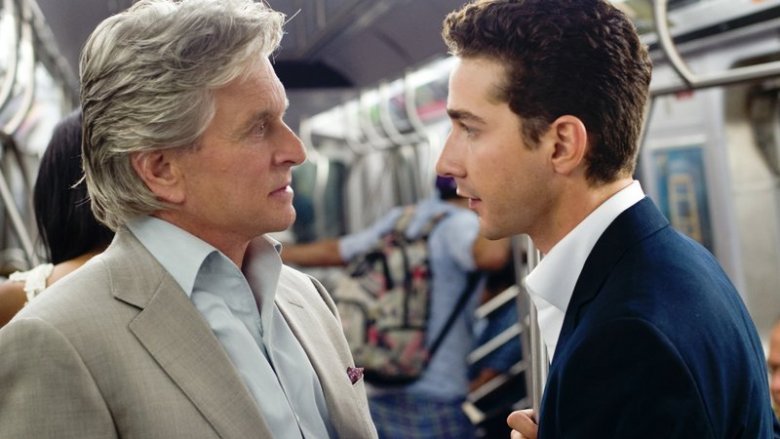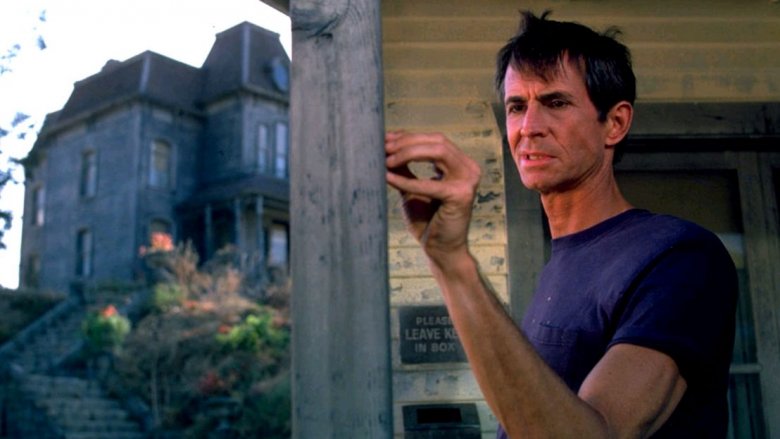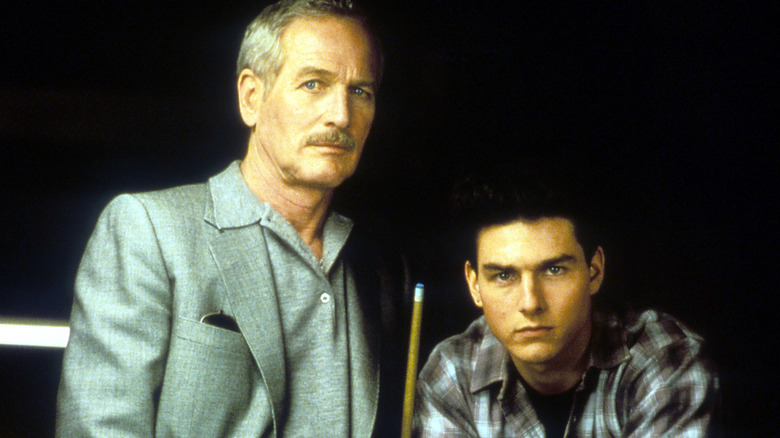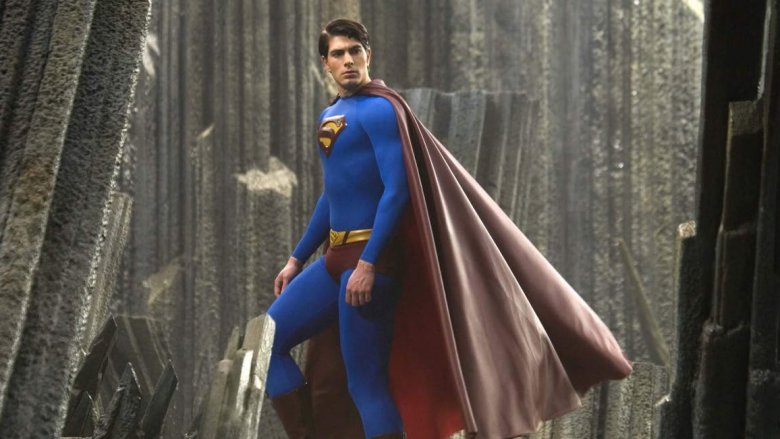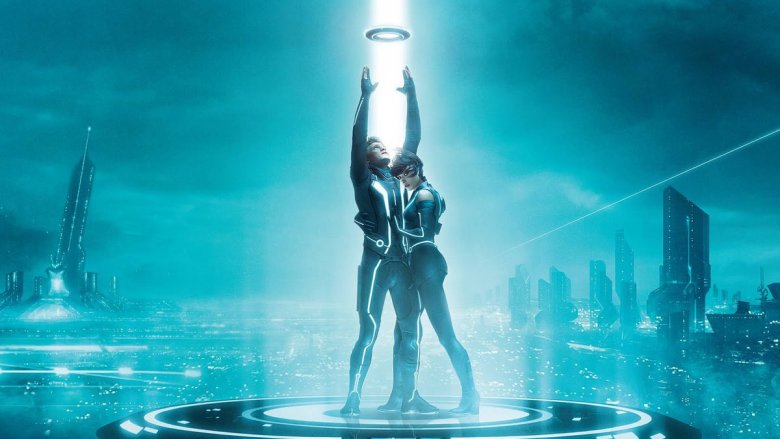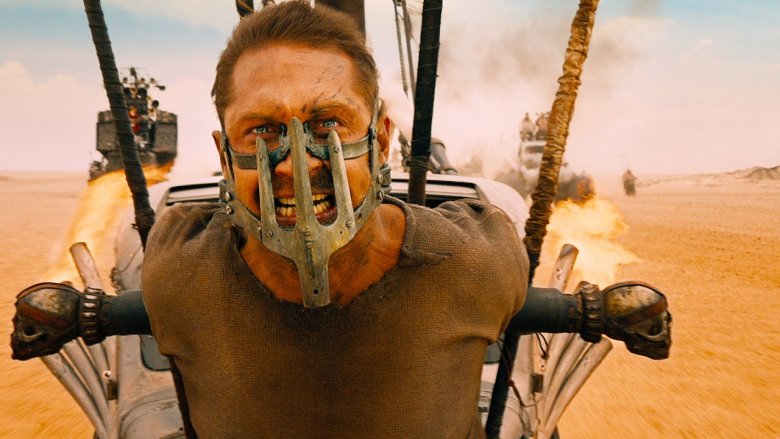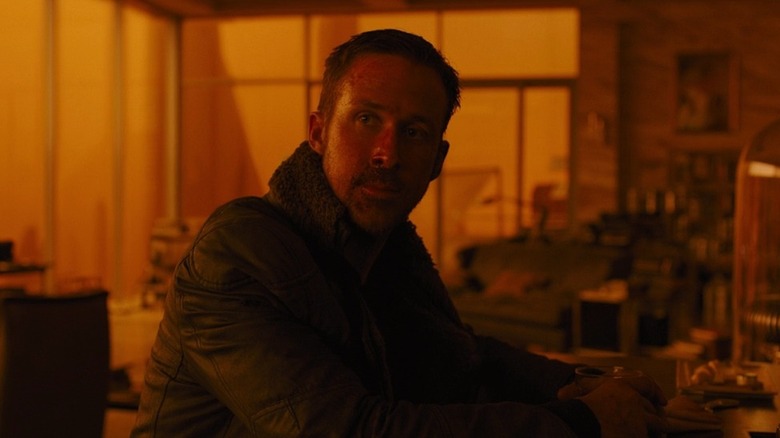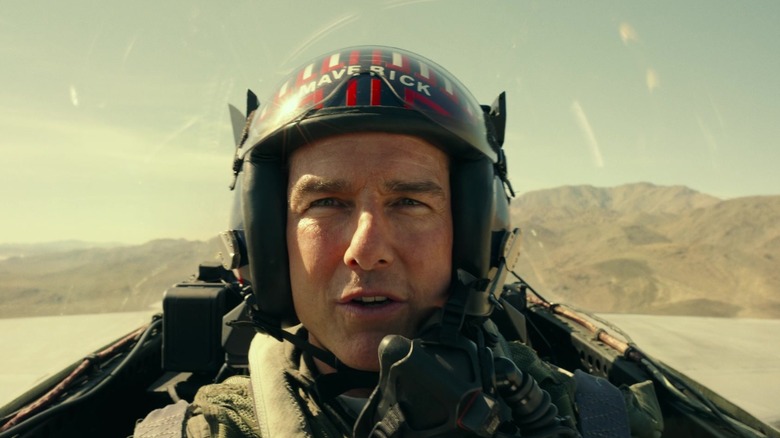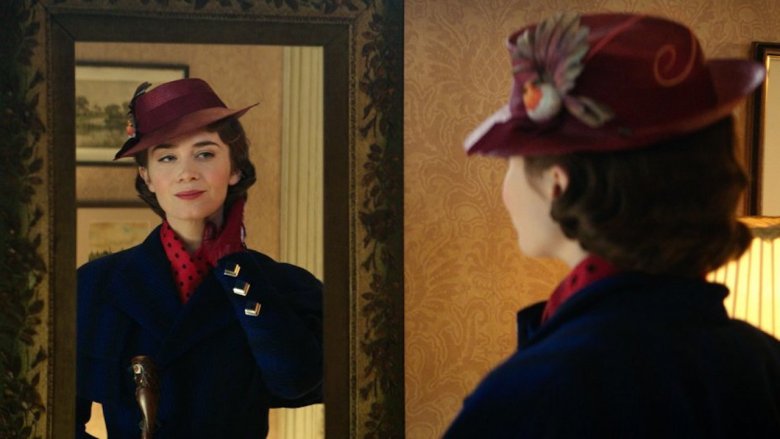Movie Sequels That Took Decades To Get Off The Ground
If there's one thing everybody knows about the movie business, it's that Hollywood certainly loves its sequels (and always has). After all, if the first film earned mad stacks at the box office, then why not try it again? Sometimes, that leads to an inferior film, but occasionally, you might get a masterpiece like Spider-Man 2 or The Empire Strikes Back. But whether it's a major bomb or an instant classic, most movie sequels have something in common: they're released pretty quickly after the last film in the franchise.
Waiting years and years to make the next installment almost seems to defeat the purpose. What if interest wanes or actors are too old to reprise their roles? But sometimes, it takes a while to get that sequel going. Maybe it's due to behind-the-scenes drama, or perhaps the creators just needed some time to find a new take on the next chapter. Whatever the reason, the sequels on this list all took decades to get off the ground.
It took 20 years for Rambo to get back in action
After defeating the Soviets in 1988, John Rambo decided to hang up the old bandana for two whole decades. In fact, the Vietnam vet-turned-international action hero wouldn't return until 2008, with the appropriately titled Rambo. The fourth installment of the First Blood franchise, Rambo finds the world-weary soldier (played, of course, by Sylvester Stallone) heading into the Burmese jungle to rescue a group of missionaries. Of course, after 20 years, Rambo's a little bit slower and a whole lot wrinklier. So, why did it take so long for Stallone to get his beloved Green Beret back in action?
Well, according to Stallone himself, he couldn't find a story that grabbed his attention. He briefly considered sending Rambo down to Mexico to rescue a kidnapped girl, but ultimately, he scrapped the idea (only to bring it back for Last Blood) and settled on having Rambo stick up for the displaced Karen people. But sadly, absence does not always make the heart grow fonder, and neither audiences nor critics were clamoring for a sequel all these years later. Rambo was the worst-reviewed movie in the franchise until Last Blood came along, and it's still the lowest-grossing film in the series. But while it didn't live up to its potential, at least we got to see Stallone mowing down an army with the mother of all machine guns.
The aliens took 20 years to return for Independence Day: Resurgence
When the original Independence Day landed in theaters in 1996, the alien invasion flick abducted over $800 million at the box office. The movie was a major hit, and it seems like a sequel should've been the obvious next step. But even though there was talk of a follow-up as early as 2002, it took the alien mothership quite a while to return to Earth — two whole decades in fact.
According to director Roland Emmerich, there's a good reason why it took so long for Independence Day to resurge. Speaking with EW, Emmerich explained that he's "always against sequels" and only when he "can see another way how to make it not look like a sequel" would he consider shooting the next installment of a series. Also, we're going to speculate that a certain tragic event in 2001 probably dimmed the enthusiasm for the destruction of major landmarks, at least for a decade or two.
However, 20 years after the first film, Independence Day shouted "I'm back!" and flew into theaters with the long-gestating sequel, Resurgence. Unfortunately, the second movie was missing two major things — Will Smith... and an audience. The movie was a flop, and chances are good these evil extraterrestrials won't be coming back anytime soon.
T2 Trainspotting chooses life 21 years later
Based on the novel by Irvine Welsh, Trainspotting is a pitch black comedy that features the creepiest baby, the filthiest toilet, and the most memorable bunch of drug addicts in cinema history. The 1996 film was a smash hit that put Ewan McGregor and director Danny Boyle on the map, but the ending left a lot of people wondering about what happened to Mark Renton. Did he choose a career? Did he choose a family? Did he choose a freaking big television?
Well, literature lovers got their answer in 2002, when Welsh wrote a follow-up novel. But as for film fans, they had to wait a little bit longer. Why's that? Well, firstly, original screenwriter John Hodge tried adapting Welsh's second book, but the script just didn't work. Secondly, once-frequent collaborators McGregor and Boyle had a huge falling out after a debacle surrounding 2000's The Beach. Boyle led McGregor to believe he would play the lead in the film, but the director picked Leonardo DiCaprio instead. Afterward, the two didn't speak for about ten years, which played a huge part in keeping Trainspotting 2 away from theaters.
But eventually, McGregor and Boyle made amends, and soon after, there was serious momentum behind the scenes. One week in 2015, Boyle and the creative team behind the first Trainspotting spent a week brainstorming a way to make the sequel work, and Hodge was finally inspired to write another screenplay, one that mixed parts of the sequel book with modern updates to the story. And then, 21 years after the original debuted, T2 Trainspotting was finally ready to choose life on the big screen.
Gordon Gekko was still greedy 23 years later in Wall Street: Money Never Sleeps
When we think "sequel," the last director who comes to mind is probably Oliver Stone. After all, Platoon Part Two probably wouldn't work, another Doors movie would be a dead end, and nobody's buying tickets for a Snowden sequel. In fact, when somebody at Paramount decided it would be a good idea to bring back cinema's greediest bad guy, Gordon Gekko, Stone originally wasn't interested. But after the 2008 financial collapse, Stone decided that another tale of capitalism run amok might be worth telling. "I wouldn't have done it without the economic meltdown," Stone told Variety.
So, 23 years after the original film, both Stone and Michael Douglas returned to the world of cutthroat investors and financial felons with Wall Street: Money Never Sleeps. But while the film took aim at a new generation of psychopathic stock brokers, audiences weren't that interested in seeing Gekko back in action. The film was a box office disappointment, a critical failure, and major blow to the stock of Oliver Stone.
Norman Bates came back after 23 years in Psycho II
Directed by Alfred Hitchcock, Psycho is one of the finest horror movies ever made. It's the granddaddy of the slasher genre, it gave us one of the all-time great villains with Norman Bates, and it made an entire generation afraid of motel showers. But this 1960 horror flick wasn't exactly begging for a sequel. The original ends with Norman locked inside a mental asylum, his secrets revealed and his mind completely gone. But when did a solid conclusion ever stop anyone from making a sequel?
The next installment of the Psycho series first came in book form. The original film was based on a novel by Robert Bloch, and the author followed up his pulp thriller in 1982 with a book that's been described as "unfilmable." In fact, it's so nuts that Universal Studios had no desire to adapt Bloch's new novel. Instead, they decided to make their own film with a completely different plot. They hired Tom Holland (no, not that Tom Holland — the filmmaker of Fright Night and Child's Play fame) to write the script, and they were originally going to make it a TV movie starring Christopher Walken.
But then, the OG slasher himself, Anthony Perkins, fell in love with the script and returned for the role. Once Perkins was on board, Universal turned Psycho II into a theatrical film. By the time the film was in theaters, it had been 23 years since Norman first went all kill crazy in that motel bathroom. And while it's probably true that Hitchcock's classic didn't need a sequel, Psycho II has its fair share of defenders, including Quentin Tarantino.
Paul Newman picked up a pool cue 25 years later with The Color of Money
Released in 1961, The Hustler is an incredibly cool classic about Fast Eddie Felson (Paul Newman), a slick pool hustler who's hoping to beat one of the all-time greats. The movie earned Newman a much-deserved Oscar nomination, but the blue-eyed actor didn't get the trophy that time. However, 25 years later, Newman picked up another pool cue and sank a fantastic performance into the side pocket with The Color of Money.
The original Hustler was based on a novel by Walter Tevis, and in 1984, the author published a sequel. When Newman heard about the book, the A-lister was incredibly excited, as he loved the character of Fast Eddie and wanted to get him back in the game. However, original director Robert Rossen had passed away in 1966, so Newman approached Martin Scorsese with the gig. "My tastes don't run to shooting sequels," Scorsese told The New York Times. "But I love Paul Newman's work — especially in The Hustler — and I liked the ambiance of that film." So when Newman came knocking, Scorsese signed on.
The plot of the film would follow an older Fast Eddie who takes a younger pool player under his wing and tries to manipulate him into becoming the world's best hustler. Scorsese hired up-and-coming actor Tom Cruise for the part, basically casting the movie star of the future against the movie star of the past. The film became the 12th highest grossing film of the year, and it finally earned Newman an Oscar for the same exact character he'd played 25 years before.
Superman returned after 26 years... not counting those other sequels
Some people love Henry Cavill, some stan Tyler Hoechlin, but when it comes to playing the Man of Steel, nobody does it better than Christopher Reeve. He first donned the red cape in 1978's Superman, and he came back three more times to fight the likes of General Zod, a scary computer, and Nuclear Man. Of course, Superman III and IV weren't exactly super-good movies, and they killed the franchise for 19 years.
Over the next couple of decades, Hollywood desperately tried to bring the Son of Krypton back to the silver screen. J.J. Abrams wrote a script called Superman Flyby, Tim Burton and Nicolas Cage tried to get Superman Lives off the ground, and some people even considered pitting Batman against Superman long before Zack Snyder's version. But in 2006, Bryan Singer teamed up with Brandon Routh for Superman Returns, a movie that's actually part of the Christopher Reeve series.
However, Singer's version totally ignores the third and fourth film in the Reeve franchise. Instead, it picks up after Superman II, which hit theaters 26 years before. The Singer film is loaded with references to the Reeve movies, including the voice and image of the then-recently deceased Marlon Brando as Jor-El. Unfortunately for poor Brandon Routh, Superman Returns has largely been forgotten by fans, but hey, at least the guy continued to get work in the world of DC.
We went back to Tron 28 years later
Starring the one and only Jeff Bridges, Tron paved the way for the CG world we live in today. According to John Lasseter (via Variety), "Without Tron, there would be no Toy Story." Sure, the visual effects might look a little dated by today's standards, but today's standards wouldn't even exist without this 1982 cult classic. But as sci-fi movies like The Matrix took CGI to greater and greater heights, it looked like the world didn't need Tron anymore.
Then in 2007, the folks at Disney decided to rev up their light cycles and take Tron out for another spin by hiring Joseph Kosinski to direct a sequel. Of course, walking the line between paying homage and updating the special effects was going to be tricky. So Kosinski and company came up with an idea. Hoping to gauge excitement for the film and show everybody the look of the world, the filmmakers created a super expensive trailer and debuted their short film at the 2008 Comic-Con. The reaction encouraged Disney to go ahead with Tron: Legacy.
The 2011 sequel gave us two Jeff Bridges for the price of one, not to mention a pretty cool score from Daft Punk. Unfortunately, the 28-year gap between films resulted in a movie that didn't exactly light the world on fire. Sadly, Tron: Ares — released 43 years after the original — didn't exactly light the world on fire either.
Mad Max drove into theaters 30 years later with Fury Road
In 1979, Mel Gibson climbed behind the wheel of the V8 Interceptor and roared into cinemas with Mad Max. The Australian actor would reprise the role two more times, becoming The Road Warrior and going Beyond Thunderdome. Of course, Gibson always rode across the wastelands with director George Miller, the visionary behind the dusty, dirty franchise. But after their 1985 collaboration, the series ran out of gas. After all, we don't need another Mad Max movie... right?
Well, in 1998, Miller was minding his own business, literally walking across a road, when he got the idea for a new Mad Max movie. The director wanted to start shooting in 2001, but 9/11 happened, which wrecked the economy and screwed up the film's budget. It also didn't help that Mel Gibson was about to have a major public meltdown and reveal himself to be, well, a rather controversial figure. So the fourth Mad Max film was put on hold for a grand total of 30 years, until Miller, Tom Hardy, and Charlize Theron created the best film of the entire franchise: Fury Road. Sure, it took three decades, but it was more than worth the wait, as Fury Road gave us the Doof Warrior, the Pole Cats, and Imperator Furiosa. Sometimes, patience really is a virtue.
We jumped 35 years into the future with Blade Runner 2049
Blade Runner was a major bomb — both critically and commercially — when it was released in 1982 (one of the greatest years in movie history). But all these decades later, Ridley Scott's tale of robots on the run has become one of the most beloved and influential films in sci-fi history. In other words, it was basically an "untouchable" movie among cinephiles (well, aside from all those re-releases, anyway). However, there were two people who thought maybe a Blade Runner sequel might work: Bud Yorkin and his wife Cynthia Sikes.
Yorkin was one of the producers of the original film, and along with co-producer Jerry Perenchio, he owned the rights to the atmospheric, enigmatic film. For a long time, neither producer wanted to do anything with the property, but once Yorkin and Sikes started thinking about a "part two," they bought out Perenchio and got busy expanding Rick Deckard's world.
Initially, Ridley Scott was going to direct, but another sequel to one of his classics — Alien: Covenant — sidelined the English filmmaker. So Denis Villeneuve of Sicario and Arrival was tapped to sit behind the camera. With Harrison Ford starring alongside Ryan Gosling, Blade Runner 2049 hit theaters in 2017, 35 years after we first entered a world of replicants and flying cars. While the movie wasn't a box office smash, it did impress critics, and the film finally earned the much-deserving and oft-shunned Roger Deakins an Oscar for Best Cinematography.
Tom Cruise felt the need for speed 36 years later with Top Gun: Maverick
Tom Cruise burst onto the scene with Risky Business, but it was Top Gun that made him a bona fide movie star. It was the highest-grossing film of 1986, gave people the need for speed, and featured some impressive chomping action from Val Kilmer. And since we all know Tom Cruise is an adrenaline junkie who absolutely loves sequels featuring crazy stunts (we're looking at you, Mission: Impossible), it seems like a Top Gun 2 would've been the most obvious thing in the world. But Cruise didn't immediately climb back into the cockpit.
True, there were rumors in 2010 that he'd take to the skies once again, but Top Gun director Tony Scott's tragic death in 2012 kept the sequel from getting clearance for a few more years. However, the movie was eventually cleared for take off, and Top Gun: Maverick finally soared into theaters in 2022 — a whopping 36 years after the franchise first took to the skies. Accompanied by young guns like Miles Teller and Glen Powell, Cruise did many of his own flying stunts, and the film proved wildly popular, earning $1.4 billion at the box office and becoming the second highest-grossing movie of the year.
Mary Poppins flew back into our lives 54 years later
When Mary Poppins was released in 1964, audiences were eager to step in time with the film's catchy songs, and the movie earned a staggering 13 Oscar nominations. Julie Andrews even went home with the little gold trophy for Best Actress, plus the movie turned her into a major star. But there was one person who absolutely hated the film and its dancing penguins and energetic chimney sweeps: P.L. Travers, the author who introduced Poppins to the world.
Travers absolutely detested the upbeat adaptation (yeah, Saving Mr. Banks lied to us), so when Walt Disney asked if they could adapt another one of her eight books about the prim and proper Poppins, Travers shut Disney down. Disney head Jeffrey Katzenberg would resume conversations with Travers throughout his 1984-1994 tenure, but the irascible author made things so difficult that Katzenberg just gave up. There wasn't any movement on the Mary Poppins front until after Travers passed away in 1996. About 16 years after her death, the folks at Disney approached the author's estate again, and this time, they actually got the go-ahead. Sadly, Julie Andrews was too old to reprise the role, but 54 years after the original film, Emily Blunt did a practically perfect job of playing everybody's favorite flying nanny.
